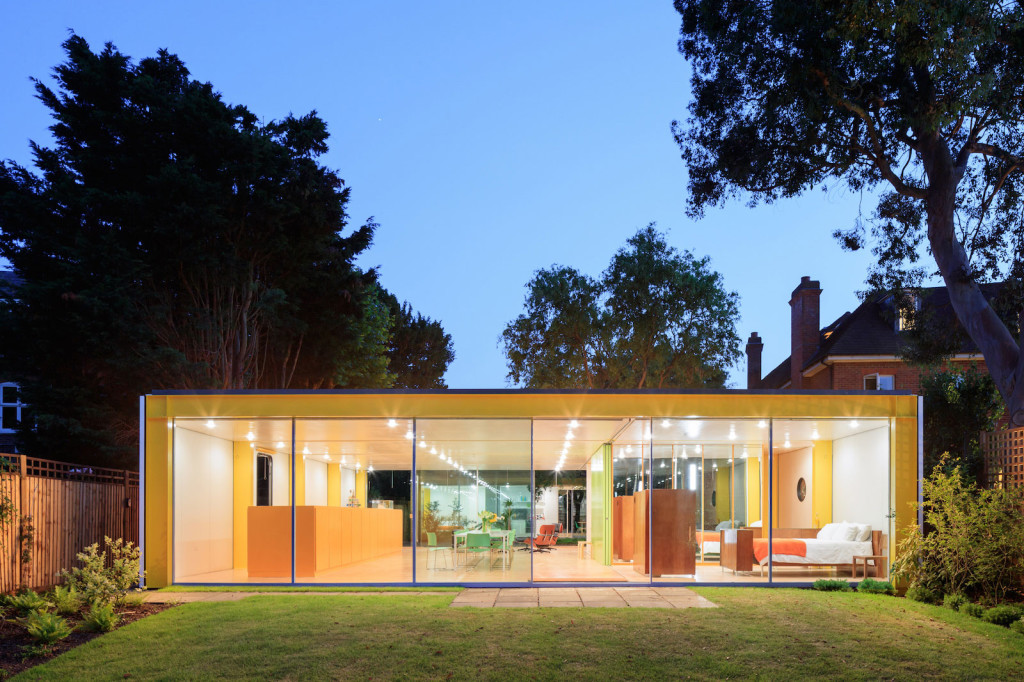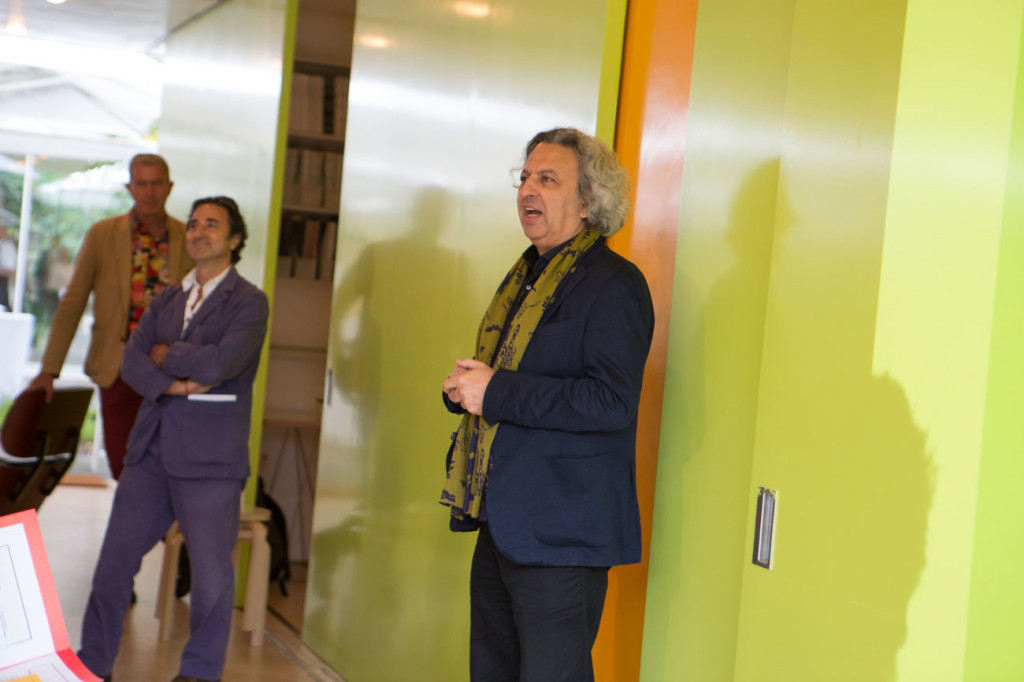The GSD Premieres the Wimbledon House and the Richard Rogers Fellowship

The modular home world-renowned British architect Richard Rogers designed for his parents in the 1960s now serves as an urban studies lab. Photo credit: Iwan Baan.
In June, the Harvard Graduate School of Design (GSD) premiered Lord Richard Rogers’s Wimbledon House in London for the first time since restorations began in 2015 by British architect Philip Gumuchdjian and landscape architect Todd Longstaffe-Gowan MLA ’84. The House, designed by Rogers for his parents in the late 1960s, was gifted to Harvard GSD in 2015 by Rogers and his wife, Ruth, to ensure the continued use as a residence, and to provide a unique research opportunity for future generations of professionals and scholars—from across fields and disciplines—whose work is focused on the built environment.
The Wimbledon House serves as the residence for the Richard Rogers Fellowship, as well as a new GSD venue for lectures, symposia, and other events bringing together scholars and practitioners from London, Europe, and around the world. The first class of fellows has taken residence at the House and commenced research. Plans are underway to execute a series of public programs in the coming year.
Located near some of the world’s finest resources for research in urbanism, the Richard Rogers Fellowship program represents both an international extension of the GSD’s physical footprint and the School’s commitment to engaging issues faced by cities globally. ~Mohsen Mostafavi, Dean and Alexander and Victoria Wiley Professor of Design at the GSD.
“Located near some of the world’s finest resources for research in urbanism, the Richard Rogers Fellowship program represents both an international extension of the GSD’s physical footprint and the School’s commitment to engaging issues faced by cities globally,” says Mohsen Mostafavi, dean and Alexander and Victoria Wiley Professor of Design at the GSD. “We are thrilled with the gift of the Wimbledon House and know that it will serve as the foundation for meaningful progress in addressing international urban issues.”
A pre-fabricated single-story dwelling, the Wimbledon House features a bright yellow painted steel frame, glazed façade, and movable partitions that allow the easy reconfiguration of the interior space. Considered one of the most important modern houses in the UK, it was granted a UK Grade II Heritage listing in 2013. Rogers has described the house as a “transparent tube with solid boundary walls,” and noted its influence on his subsequent designs of the Centre Pompidou and The Lloyd’s Building.
Architect Philip Gumuchdjian, who has worked with Richard Rogers since the 1980s, was commissioned to refurbish the House in preparation for the Fellows. Commenting on the renovations to the House, also known as 22 Parkside, Philip Gumuchdjian, founding director of Gumuchdjian Architects, says, “Parkside is not just an iconic, flexible machine for living, nor simply a historic experimental building that foretold the architect’s future work; it was also a home with a unique memory, patina, and aura. Conserving these qualities within a wholly refurbished 21st-century building tailored to Harvard’s new use was our aim and hopefully the achievement of the team’s work.”

From left: Todd Longstaffe-Gowan MLA ’84, Philip Gumuchdjian, and GSD Dean Mohsen Mostafavi at the Wimbledon House in June 2017. Photo credit: Lucie Goodayle.
In designing Wimbledon House, Rogers took “an Italian approach to landscape” by splitting the house into two buildings separated by courtyards, said Todd Longstaffe-Gowan, founding director of Todd Longstaffe-Gowan Landscape Design. He notes “Parkside is a total work of art, where the house, gardens, and interiors were conceived in concert to form a unified whole. The alternating rhythm of pavilions and garden courts contribute considerably to the striking theatricality and luminosity of the ensemble; the outdoor rooms are at once boundless and enveloping. Our aim has been to restore the original balance of the 1960s composition to better reflect the architect’s original intentions, and to recover the richness, rhythm, and textures of the landscape that give Parkside its particular charm.”
The Richard Rogers Fellowship, launched in October 2016, is inspired by Lord Rogers’s commitment to cross-disciplinary investigation and social engagement, evident across his prolific output as an architect, urbanist, author, and activist. Each year, six fellows will be awarded a three-month residency, travel expenses to London, and a $10,000 cash prize, affording them access to London’s extraordinary institutions, libraries, practices, professionals, and other resources. The goal of the residency program is to support research that addresses alternative and sustainable urban futures. Projects that the six inaugural fellows are bringing to the House this year include examinations of public and affordable housing; how food and cooking transform cities; and citizen-driven urban regeneration initiatives, particularly in London and Berlin.
The inaugural class of fellows—who hail from Austria, Mexico, the Netherlands, Norway, and the United States—were selected from more than 200 applicants from around the world. “The spirit of the Fellowship is intended to carry forward and expand on Richard’s deep commitment to cities not as ends in themselves, but as a fundamental means of bettering human life,” said Dean Mohsen Mostafavi. “At the GSD, our work is organized around the urgent issues cities are facing globally, a pedagogical approach requiring exploration and collaboration across disciplinary lines. We are very fortunate and excited about this opportunity to support, learn from, and promote such cross-disciplinary research internationally, in the context of London’s thriving architecture, design, and art communities and vast institutional resources.”
To view bios of the Fellows and the application for 2018 the Richard Rogers Fellowship, please visit http://www.richardrogersfellowship.org. Submissions will be accepted starting October 2017, with a deadline of late November.
